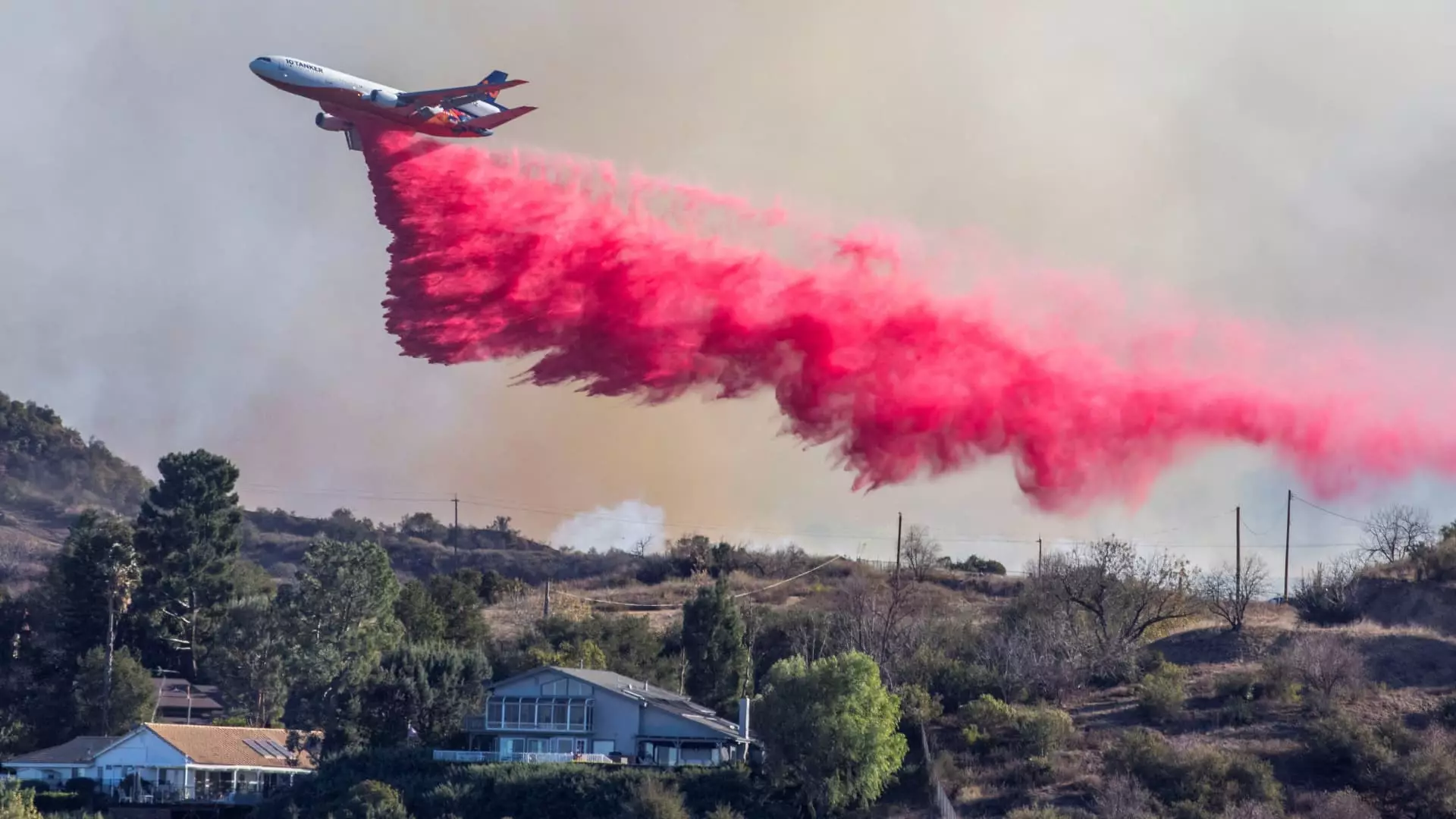The recent surge in wildfires across California, particularly around Los Angeles, has not only jeopardized thousands of lives but also underscored a critical gap in aerial firefighting capabilities. While the traditional wildfire season typically spans from April to November, the year 2023 has been an alarming exception, marked by destructive fires that emerged out of routine off-seasons. The increasing unpredictability and frequency of such disasters can be attributed in part to climate change, which is projected to make wildfires more frequent and severe throughout the 21st century. An alarming report by the United Nations Environment Program indicates that the global patterns of wildfires are shifting, necessitating a reevaluation of the resources dedicated to combating these blazes.
Aerial firefighting operations have become increasingly vital in the battle against wildfires, ensuring that firefighters on the ground have the necessary support to contain and extinguish flames. The California Department of Forestry and Fire Protection (Cal Fire) boasts a significant fleet of more than 60 firefighting aircraft, the largest civil fleet in the United States. However, this state-supported arsenal is often bolstered by private companies specializing in aerial firefighting, whose fleets operate under contract to provide crucial additional resources during emergencies. For instance, 10 Tanker Air Carrier is one such private entity that has proven invaluable, particularly during the recent Palisades and Eaton fires that wreaked havoc in California.
Despite their significant roles in battling wildfires, private firefighting companies face operational limitations. Equipped with four modified DC-10 aircraft, 10 Tanker had to navigate the challenges posed by their fleet being in routine maintenance during critical moments of the Los Angeles fires. The CEO of 10 Tanker, Joel Kerley, remarked on the pressure to perform under circumstances that were akin to a “Super Bowl” of fire response—a scenario where quick action can mean the difference between protecting property and widespread destruction. Furthermore, while these companies are under contract during the traditional wildfire season, their operations during off-seasons often take a hit, leading to concerns about readiness when emergencies arise outside expected parameters.
Economically, the landscape of aerial firefighting is shifting. Companies like Bridger Aerospace, based in Montana, are experiencing record revenues as demand for their services continues to rise. In fact, Bridger reported record profits driven by prolonged dry conditions, which have extended operational timelines beyond the traditional parameters. This scenario emphasizes a growing trend: more regions are recognizing the need for robust aerial firefighting solutions, underscoring both the importance of their roles and the economic viability of expanding these fleets. However, the complexity of creating and maintaining an effective fleet means that increasing capacity is a slow and costly endeavor.
As wildfires become a consistent threat, some regions are recognizing the need to enhance their aerial firefighting capabilities. For example, countries like Australia have begun building their firefighting aircraft inventories, motivated by their own experiences with catastrophic wildfires. The U.S. equity market has seen an influx of resources directed toward private aviation firms specializing in aerial firefighting. However, the modification of aircraft for firefighting purposes is a lengthy and resource-intensive process. Aero Air’s Kevin McCullough highlighted that transforming conventional aircraft into firefighting tankers requires significant engineering, taking as long as 18 months.
The evolution of firefighting aircraft is also noteworthy. The challenges faced by modern aerial firefighting pilots, particularly in extreme weather conditions like hurricane-force winds, emphasize the need for advanced aircraft styles. These planes, equipped to drop large volumes of water and fire retardants effectively, are increasingly in demand. Innovations are in the pipeline, including new models from manufacturers like De Havilland that are designed for improved performance in adverse firefighting conditions. Features such as enhanced cockpit technology and advanced water management systems are vital to the modernization efforts aimed at optimizing aerial responses.
The growing threat posed by wildfires requires urgent and sustained action at multiple levels—government, private industry, and community organizations. Increased investments in aerial firefighting resources, coupled with innovative strategies to enhance fleet capabilities and readiness, will be essential to mitigate the catastrophic impacts of these fires. As climate change continues to exacerbate the frequency and intensity of wildfires, failure to act will leave communities vulnerable and unprepared for the blazing threat ahead. The aerial firefighting sector stands at a critical juncture, demanding both innovation and allocated resources to combat a reality that is increasingly becoming the norm rather than the exception.


Leave a Reply